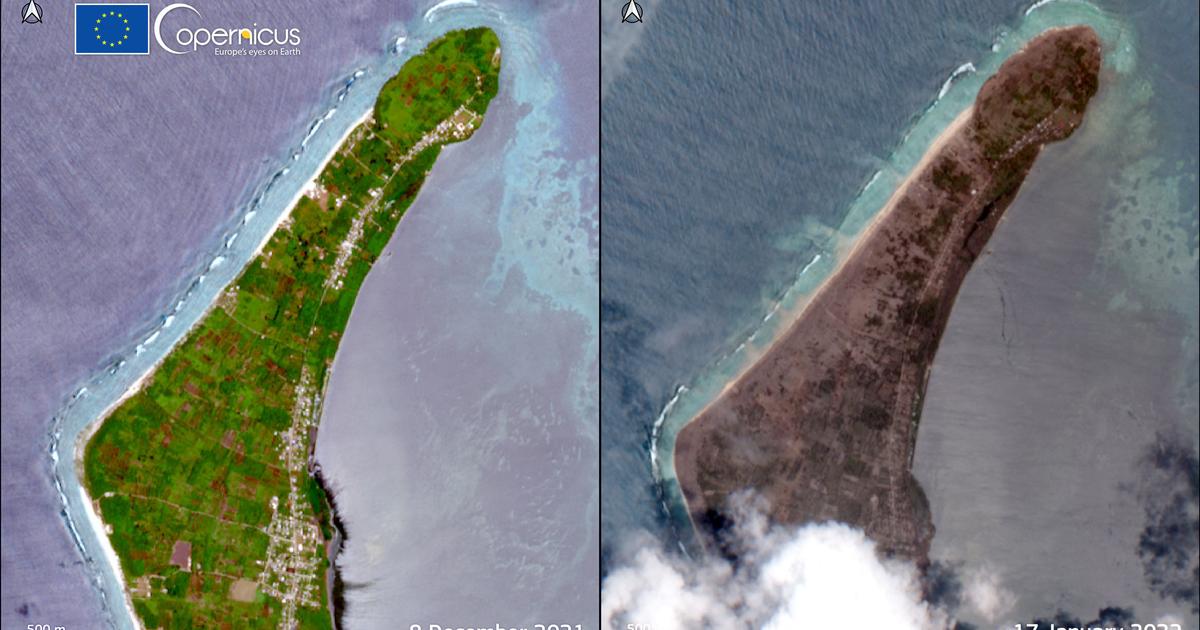Record global temperature during the month of February 2024, increased emissions from forest fires in Canada, Greece victim of the largest fire ever recorded in the European Union... All these extreme climatic events have one thing in common: they were measured by Copernicus.
This European program is responsible for observing and restoring data on the health of the Earth in real time, obtained using satellites or ground stations.
Le Figaro
takes stock of the five things to know about this program which celebrated its 25th anniversary in 2023.
European innovation
Copernicus was created in 1998 and has since been broadcasting data about the planet daily.
Its name refers to the astronomer Nicolaus Copernicus, known for having developed and defended the theory of heliocentrism, according to which the Earth revolves around the sun.
Its coordination and management are ensured by the European Commission, in collaboration with EU members as well as numerous agencies such as the European Space Agency.
All EU countries participate in the financing of Copernicus, which has a budget of 4.7 billion euros between 2014, the year of the launch of the first satellite, and 2021, we can read on the site.
For the period 2021-2027, the European Commission confirmed the political agreement on the largest budget ever allocated, to the tune of 14.88 billion euros.
“Europe was very ambitious and innovative in creating this program
,” declares Alexandre d'Aspremont, research director at CNRS and co-founder of Kayrros, a company specializing in environmental intelligence.
“Copernicus is the only program today to offer real-time monitoring of the Earth
,” continues the researcher, with pride.
Before this European program, the Americans had tried to pave the way with the Landsat program.
“But Copernicus is much more developed
,” compares Alexandre d’Aspremont.
Before adding that
“the Chinese and private players are also starting to take an interest in it, but no one has yet succeeded in forming a constellation of satellites as important as that of Copernicus”
.
Also read: Copernicus puts Europe at the forefront of Earth observation
Constellation of six satellites
Concretely, Copernicus works thanks to a constellation of satellites called
“Sentinel families”
, but also with sensors placed on the ground or at sea. Each
“family”
of satellites focuses on a particular theme.
There are six in total.
The Sentinel 1 network satellites are interested in land and oceans.
Their images made it possible in particular to follow and retrace the deadly floods which hit Bangladesh in June 2022. Sentinel 2 scans the land, vegetation and wetlands, as well as the episodes of drought which affect the rivers.
The mission of Sentinel 3 is to measure the temperature of the oceans and land.
While the Sentinel 4 is interested in aerosols and the Sentinel 5 in air quality by tracking different greenhouse gases, such as methane.
Sentinel 6 ultimately involves doing altimetry (a geometric method of measuring altitudes, Editor's note).
For example, it measures the level of almost all of the planet's oceans with precision down to the millimeter.
Wide influence
This diverse and precise data is valuable in many areas.
And especially for scientists.
Alexandre d'Aspremont also uses them on a daily basis.
As part of his company Kayrros, which analyzes satellite data, he uses Sentinel 5 data a lot on methane emissions:
“This allows us to define the consequences of this greenhouse gas on climate change.”
“Without Copernicus, we would not exist
,” he says.
But this influence goes beyond scientific studies.
“Copernicus data makes it possible to implement environmental policies to reduce deforestation
or
greenhouse
gas emissions ,
”
explains the CNRS research director.
The latter illustrates his point by citing the work carried out by John Kerry, special envoy of the President of the United States for the climate.
The American politician was notably sent to Turkmenistan, considered
“one of the super methane emitting countries in the world according to a map produced by Copernicus”
, explains Alexandre d'Aspremont.
John Kerry's visit to Turkmenistan led to the conclusion of an agreement aimed at stopping the country's colossal methane leaks, reports the
Guardian
.
Free and open data
Beyond scientists, businesses and politicians, Copernicus data is accessible to everyone since it is completely free and open to access.
(To find them, click here)
Global warming
If Copernicus was not known to the general public until a few years ago, the increase in the number of extreme climatic events has increased its influence.
The European program has become a
“crucial player”
in terms of information on climate change, assures Alexandre d'Aspremont.
The numerous temperature records broken in recent years bear witness to this.
Like the figures published this Thursday March 7 which classify the month of February as the hottest on record.
Also read: Almost all of the extreme weather events of 2023 were caused by global warming
According to information from Les
Échos
, Copernicus produces
“400,000 billion pieces of data per day”
and has
“more than 700,000 users in the four corners of the planet”
.
And its influence is not about to stop any time soon since, according to the CNRS researcher, the European Union
“is preparing the next generation of satellite”
in order to continue to monitor climate developments.

